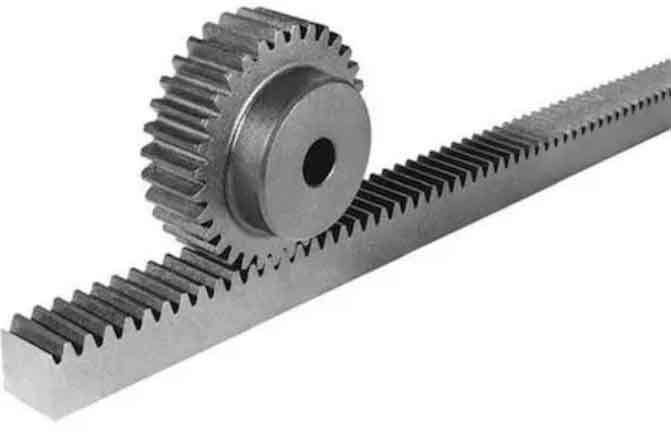
Rack and pinion gears play a vital role in the construction industry by optimizing the performance of heavy machinery and equipment. The construction industry relies on powerful and efficient machinery to handle heavy loads, perform precise movements, and ensure safety on construction sites. Rack and pinion gears offer specific advantages in this context, making them a preferred choice in various construction applications. Let’s explore how rack and pinion gears optimize heavy machinery in the construction industry:
1. Cranes and Hoists:
Rack and pinion gears are commonly used in cranes and hoists for vertical lifting and precise positioning of heavy loads. The direct engagement of the rack and pinion gears ensures efficient power transmission and accurate control during lifting operations. Rack and pinion drives enable smooth and controlled vertical motion, providing the necessary strength and precision for safe and effective lifting on construction sites.
2. Tower and Mobile Cranes:
Rack and pinion gear systems are integral to tower cranes and mobile cranes, enabling various lifting and maneuvering functions. These systems facilitate the movement of the crane’s boom, jib, and trolley, ensuring precise positioning and efficient load handling. Rack and pinion drives offer the necessary load capacity, reliability, and accuracy for lifting heavy loads and optimizing the performance of cranes in construction projects.
3. Elevators and Lifts:
Rack and pinion gear systems are widely used in elevators and lifts for vertical transportation in construction sites and buildings. These systems provide smooth and controlled vertical motion, ensuring safe and efficient transportation of people and goods. Rack and pinion drives offer precise positioning, reliability, and safety features, contributing to the optimal operation of elevators and lifts in construction projects.
4. Concrete Pumps and Placers:
Rack and pinion gears are employed in concrete pumps and placers, enabling the precise positioning and distribution of concrete during construction. These systems ensure accurate placement of concrete for foundations, floors, and structures. Rack and pinion drives offer the necessary power transmission, accuracy, and reliability to optimize the concrete pumping and placing process, enhancing efficiency and quality in construction projects.
5. Formwork Systems:
Rack and pinion gear systems are utilized in formwork systems, which are temporary structures used to support concrete during casting and hardening. These systems facilitate the controlled movement and positioning of formwork panels, enabling accurate shaping of concrete structures. Rack and pinion drives provide precise linear motion, ensuring proper alignment and stability of formwork components, resulting in high-quality concrete structures.
6. Excavators and Earthmoving Equipment:
Rack and pinion gears find application in excavators and earthmoving equipment for precise bucket or arm movements. These systems enable controlled digging, trenching, and earthmoving operations. Rack and pinion drives offer accurate motion control, allowing operators to perform detailed and precise movements, enhancing productivity and accuracy in construction projects.
7. Scaffold Systems:
Rack and pinion gear systems are employed in scaffold systems to provide adjustable height and leveling capabilities. These systems allow for the safe and efficient assembly, disassembly, and adjustment of scaffolding structures. Rack and pinion drives enable smooth and controlled vertical motion, ensuring stability, versatility, and safety in scaffold systems used in construction projects.
Rack and pinion gears optimize heavy machinery in the construction industry by providing efficient power transmission, precise motion control, and reliable operation. Their applications in cranes, hoists, elevators, concrete pumps, formwork systems, excavators, and scaffold systems contribute to the efficiency, safety, and productivity of construction projects. Rack and pinion gear technology plays a crucial role in ensuring the smooth operation of heavy machinery and equipment on construction sites.
